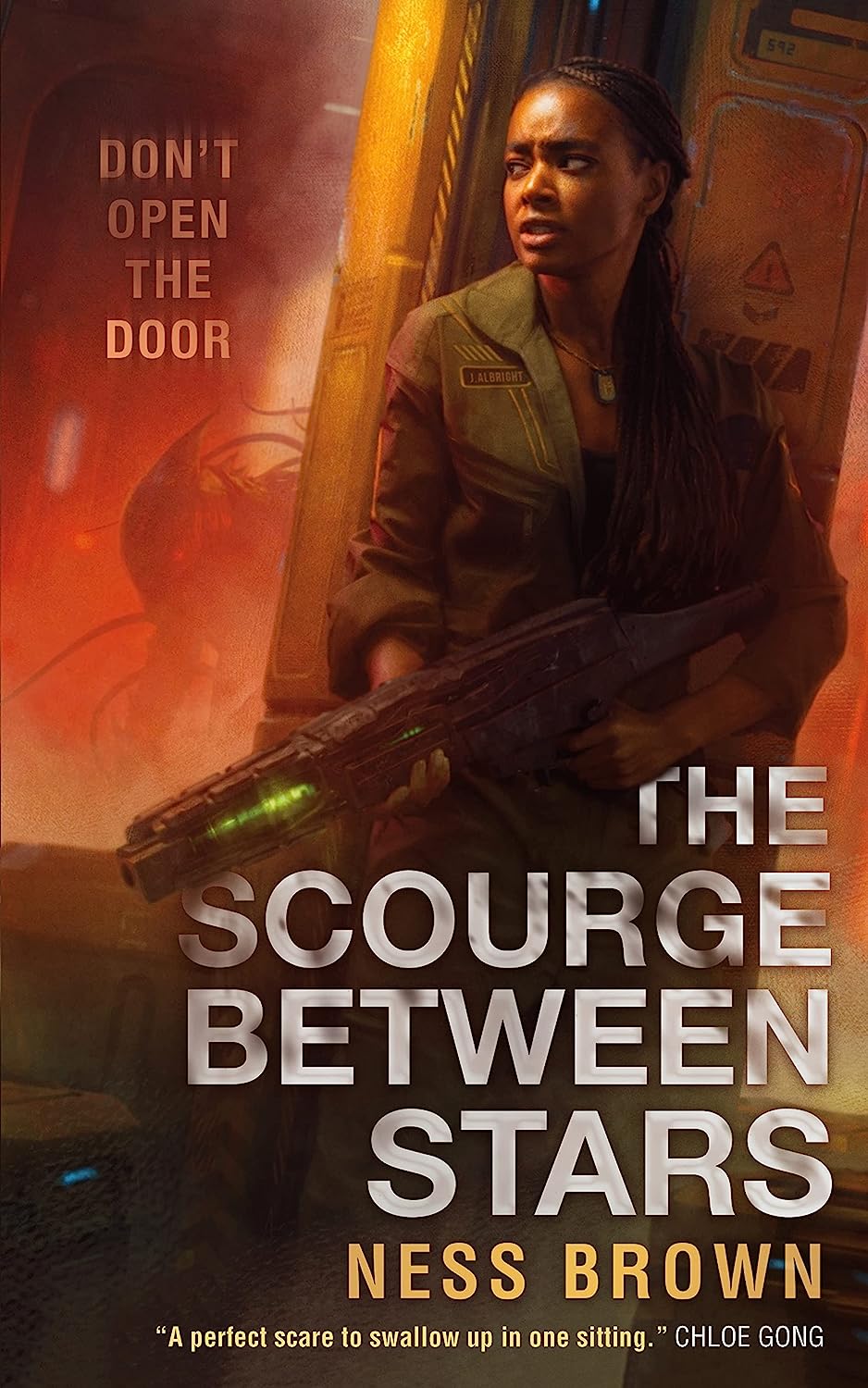
Terror on board a generation: Nath Brown’s Star Trek
“A generation of ships never seems to go well. Food, energy, and water supplies are critically short and cannot be replenished. The morale of a population that has never seen anything but steel bolts inside a spaceship turns to despair or rebellious rage. Make your own, coldly calculated decisions without caring about your passengers. The Calypso in Nath Brown’s Bane of Stars seems to be going through every crisis and more—and before that, a vicious insect creature crawls out of the bulkhead and starts killing people.
After the promise of an alien colony fell through, first mate and acting captain Jacklyn Albright limped back to Earth in a generation ship. Progress is tough. Chunks of the Calypso are torn to pieces by firefights from unknown attackers lurking in space, whom the ship can neither see nor hear. These engagements are memorably remembered as the “Duel of the Gods.” And this constant invisible siege is just the beginning of a series of problems, including a deadly food shortage, riots among the ship’s residents, and a rogue robot burning down the bridge’s computer systems.
Going from problem to problem without being able to permanently fix any of them kept Jacqueline from sleeping. (It also prevents her from spending time with her girlfriend, third officer Julie Singer.) But more important to the book’s structure, it prevents her from learning about the alien invaders too quickly.
Space has always been an effective setting for these kinds of “monster in the house” stories—because on a spaceship, there’s nowhere to go. Space is an extremely hostile environment, and if left unprotected, you can die in seconds. Beyond that, there is no rescue, help, or hope of salvation for trillions of miles. The characters must face the threat directly. The problem Brown is forced to grapple with, and deftly, is how to tease out this dramatic irony without making Jacqueline feel like a stereotypical horror protagonist purposefully ignoring the real threat she faces. Jaclyn and her crew are competent and trust each other—except for creepy Chief Technician Otto Watson—and once people start dying, they discover almost immediately that there is a murderous alien on board and how to contain it. But garbled transmissions from another ship in the fleet, begging anyone who hears not to open the door, and mysterious banging sounds from within the ship’s walls have already raised tensions. These all weigh heavily on Jacqueline, seeping into her nightmares and leaving her with burning questions. We see that as long as the ship doesn’t crumble in every waking moment of her life, she’ll figure it out.
Yet the story never feels hopeless. Even though the Calypso may never return to Earth, and even if the rest of their sprawling fleet is thrown into radio silence by this unknown alien invasion, Jacklin and her crew have a feeling they still have to do what they can for. For Jacklin, it’s personal. Remember the title “Acting Captain”? Her father, the actual captain, has locked himself in the cabin for the past two weeks and has not responded to his communications. Internal sensors told her he wasn’t dead, but that he had abdicated his duties and “disappeared and cursed them all,” leaving Jacklin to take responsibility for everyone’s life and safety.
Because Jacqueline cares about her crew, we as readers care too. They were her family, but her father refused to do so. Jacklin has learned every detail of Calypso’s interior from him since he was a child, and has become the backbone of the defense against alien invaders. And her counterpart, Viktorija Novak, the chief engineer, is tall and well-mannered, which is why the Calypso hasn’t broken up yet. The bridge crew helps her pull herself together and make tough decisions—all too often on board.
However, there is much more to the Calypso than they are—an entire army of unnamed “officers” and “technicians” who make up the rest of the ship’s personnel, who occasionally serve as redshirts for lurking alien predators.
It’s also a book that isn’t afraid to experiment with the medium. One page stuck with me because it was unexpectedly cool, and the story happened when Jacklin and her team descended into the depths of the Calypso. The top of the page is normal—white background, black text—and above it is the first half of the sentence: “The elevator doors opened.” The rest of the page is completely black, with the rest of the sentence in the middle: “Plunge into darkness.”
Impressive. That’s cool. That’s smart. I’m just disappointed that there isn’t much more left. Horror visuals are largely defined by shadows, darkness, what the characters can’t see and therefore conceivably lurk in those pitch-black pools. Of course, Jacklin and her team’s lights can only illuminate a few feet away in the dark, so they have to beafraid of it, too. Brown does a good job of describing Jacklin’s growing anxiety as she crawls through these unlit hallways—but creating a visual in the book adds a whole other layer in itself.
In the end, Bane of Stars is a classic space horror story done just right, with enough clever twists on and off the pages to keep the scenes fresh and the tension high. Remember: don’t open the door.








Tagged "The Light at the End of the World", Historical Fiction, nationalism, Siddhartha Deb, social upheaval